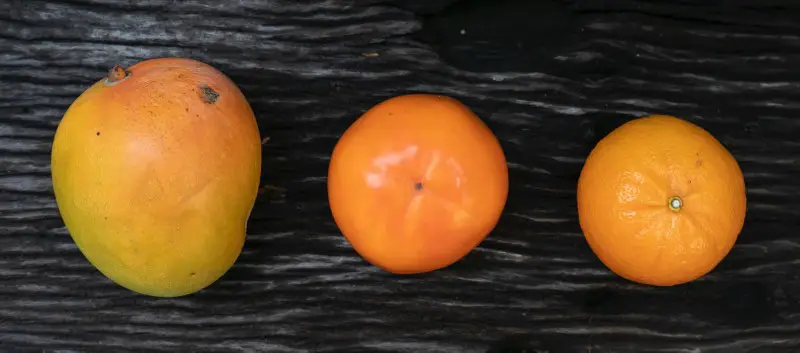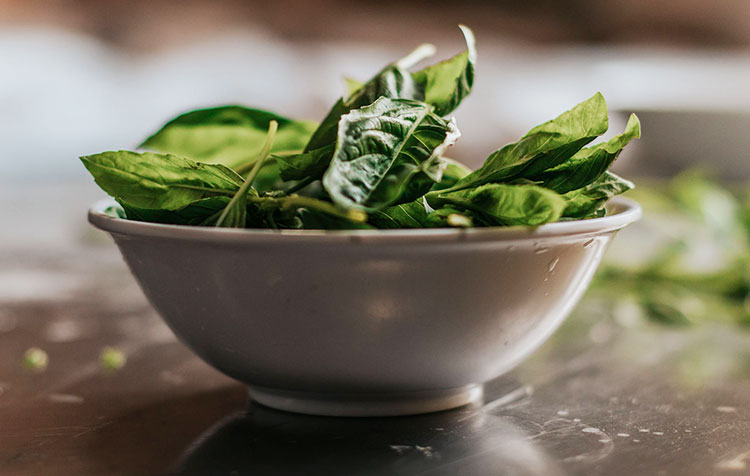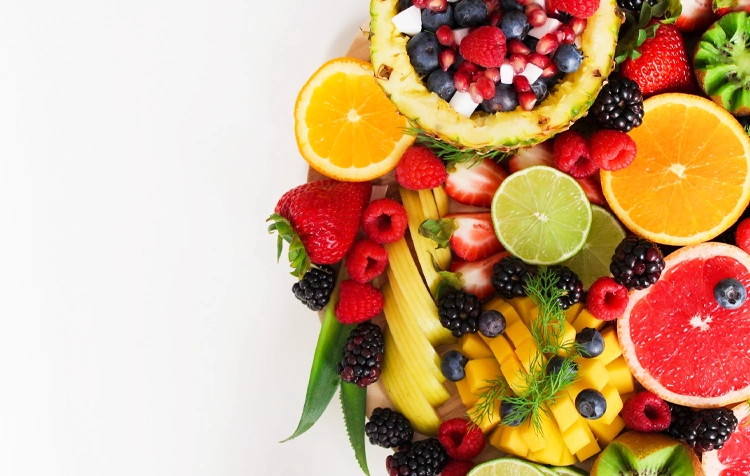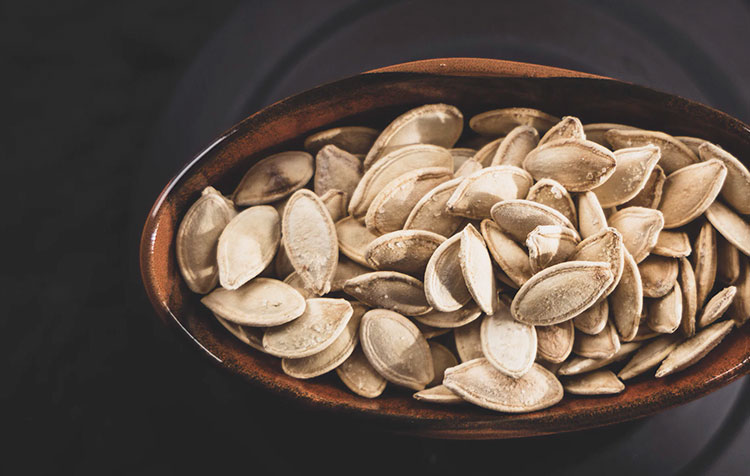You want to learn about vitamin A? Then you can sit back and relax and read through this article everything you need to know about the valuable vitamin. Beta-carotenes, also known as provitamin A, play an essential role in the supply of vitamin A and will therefore also play a role again and again in this article.
We start with a clear fact sheet about intake, function, daily requirement, risk of overdose or deficiency, to vitamin A-containing foods and dietary supplements. Finally, there is special information for vegans and vegetarians regarding the supply of vitamin A.
Here is in advance a short Overview for you:
Notice: This article is not a substitute for medical advice, but provides general information about vitamin A only. Please consult your doctor if you feel unwell or want to prevent health problems with medical care.
VITAMIN A PROFILE AT A GLANCE
Assignment: fat-soluble vitamins
Synonyms: Retinol, retinal, retinoic acids, retinoids, retinol esters
Important for: Eye health, cell division, growth process, reproduction
Daily requirement: 650-900 µg retinol activity equivalent (RAE)/day from the age of 19.1,2,3
Overdose: Upper Limit 3,000 µg RAE/day4
Deficiency symptoms: Impaired vision, night blindness, impaired reproductive function, impaired sense of taste and smell, etc.
Food: Liver, eggs, dairy products (vitamin A), red, orange and yellow fruits and vegetables (beta-carotene)
Nutritional supplement: mostly not necessary, if necessary as powder, tablets or capsules
HOW CAN I get the best possible supply of vitamin A?
Vitamin A comprises a group of essential fat-soluble vitamins, also known as retinols. These are from Beta-carotenewhich is also known as provitamin A. Beta-carotene is a secondary plant substance and antioxidant, which the body uses as needed for the Vitamin A synthesis can use. Basically, the need can therefore be covered directly via the vitamin itself or indirectly via beta-carotene.
The Bioavailability of vitamin A is up to 75 percent, that of beta-carotene is subject to strong fluctuations and is 2-30 percent depending on how it is present in the cellular compound of the plant. A positive influence on the bioavailability of beta-carotene have especially mechanical processes, which open the cellular association. These include mincing, pureeing and sufficient chewing. Through gentle cooking and a Combination with high quality fats is a good way to increase the bioavailability of beta-carotene.
How much vitamin A does the body need?

Now let's examine the daily requirement of vitamin A together. Here, as you may already be thinking, is where it gets complicated. After all, there are several sources of vitamin A: either the direct recording or the Uptake and synthesis of beta-carotene. Another challenge is that some nutrition societies use retinol activity equivalents (RAE) and other retinol equivalents (RE) to determine daily requirements.
The calculation of RAE is done like this:
1 μg retinol = 12 μg β-carotene = 24 μg other provitamin A carotenoids.
And the RE calculation as follows:
1 μg RE = 1 μg retinol = 6 μg β-carotene = 12 μg other provitamin A carotenoids.5
This effectively means that the requirement remains the same whether you measure it in RE or RAE. However, the intake required to meet this demand doubles.
The recommended daily requirement
The recommended guideline for daily vitamin A intake is between 650 and 900 µg RAE or RE per day for adults, depending on gender and age.1,2,3 The European Food Safety Authority (EFSA) has issued a rather low recommendation of 650 µg for women and 750 µg for men. Quite a bit higher is the figure given by the Institute of Medicine, which recommends a daily intake of 700 µg for women and 900 µg for men from the age of 14.
The recommendations of the German Nutrition Society (DGE) differentiate according to age and gender and are shown in the following table:
| Age | male | female |
| 1 to under 4 years | 300 | 300 |
| 4 to under 7 years | 350 | 350 |
| 7 to under 10 years | 450 | 450 |
| 10 to under 13 years | 600 | 600 |
| 13 to under 15 years | 800 | 700 |
| 15 to under 19 years | 950 | 800 |
| 19 to under 65 years | 850 | 700 |
| 65 years and older | 800 | 700 |
All three nutrition societies mentioned above recommend higher vitamin A intakes for pregnant and lactating women.1,2,3
What does the body need vitamin A for?
The human body needs vitamin A for the Eye Health, the Cell division and in childhood and adolescence, it will be for the Growth process needed. After sexual maturity, the vitamin is involved in the production of testosterone and estrogen and the development of sperm and eggs, so it can be generally said that vitamin A is essential for the Reproduction is important. In addition, the vitamin influences the effectiveness of the Immune system and the Embryonic development.
A function that is used for Beta-carotene specific is the protection of the skin from damage such as that which can occur during strong sun exposure. Beta-carotene also has an antioxidant effect and can increase the absorption of Iron multiply.6
The Vitamin A importance for the human body can be summarized as follows:
- Eye Health
- Cell division
- Growth process in childhood and adolescence
- Reproduction and production of sex hormones
- Strengthening the immune system
- Embryonic development
Can hypervitaminosis occur?
Hypervitaminosis is a toxic overuse. This can occur with vitamin A if very high doses are ingested over a longer period of time. EFSA has defined a Tolerable Upper Intake Level (UL) of 3,000 µg RE per day for men and women.4 Regarding this limit, it should be said that it is based on various studies and attempts to combine several factors. This value is therefore not set in stone.
Basically, hypervitaminosis A is a rather rare phenomenon. It occurs when the storage capacity of the body is exceeded. With a purely vegetable diet such an oversupply is not possible, because the human body controls the synthesis of beta-carotene to vitamin A according to need. This means that the vitamin is only synthesized when it is needed. However, according to EFSA, an oversupply of beta-carotene can lead to an increased risk of lung cancer in smokers. However, the risk exists only for smokers and only if the intake far exceeds the daily requirement.
Therefore, EFSA recommends that heavy smokers should not consume more than 20 mg of beta-carotene per day.4 The Institute of Medicine did not issue a UL in their "Vitamin A -Fact Sheet for Health Professionals."2
Acute symptoms for hypervitaminosis A are nausea, vomiting, itching, headaches and visual disturbances. In the case of prolonged hypervitaminosis can also be chronic disorders such as scaly skin, hair loss, fatigue, to swelling of the spleen and liver, and liver cirrhosis occur.
WHEN DOES IT COME TO UNDER SUPPLY?
An undersupply of vitamin A occurs when the body's own stores are depleted and smaller amounts of the vitamin or beta-carotene are supplied than the body needs. The human body can store vitamin A for 1-2 years.
In industrialized countries, acute deficiency is a rarity. If a deficiency does occur, it is often Alcoholism the cause.4 However, the absence of a deficiency does not mean that the average population consumes enough vitamin A or beta-carotene to provide a good or even optimal supply. The average consumption of liver, fruit and vegetables in Germany is too low for this.6
This was also confirmed by the large-scale survey in the National Nutrition Survey (NVS II), which concluded that up to 70 percent of the vitamin A supply in Germany must be ensured via beta-carotene.7 This is not yet a problem per se, since the synthesis via beta-carotene works well, but sufficient quantities of fruits and vegetables must be consumed for this.
Symptoms for a deficiency are impaired vision, night blindness, blindness, skin and mucous membrane changes, growth arrest, impaired sense of taste and smell, the disruption of reproductive function, as well as digestive problems and increased susceptibility to infections.
What are the best sources for vitamin A?

When it comes to the supply of vitamin A, it is useful to distinguish between foods containing vitamin A and foods containing beta-carotene. Vitamin A is found exclusively in animal products such as liver, eggs and dairy products, while beta-carotene is supplied exclusively through plant foods such as red, orange or yellow fruits and vegetables, as well as green leafy vegetables.
To be able to compare the different foods in the best possible way, the RAE is used again here. Basically, I recommend a diet with no or few animal productsbut in order to be as comprehensive as possible, the table also includes some animal foods:
- Beef liver (7,782 µg per 100 gram)
- Paprika (2,463 μg per 100 grams)
- Carrots, cooked (852 µg per 100 gram)
- Sweet potato (709 µg per 100 gram)
- Butter (620 µg per 100 gram)
- Butternut squash (558 µg per 100 gram)
- Honeydew melon (389 µg per 100 gram)
What do VEGANS AND VEGETARIANS HAVE TO LOOK FOR in VITAMIN A SUPPLY?
Vitamin A is recommended by the DGE not as potentially critical nutrient classified for vegans and vegetarians.8 This is because it can be assumed that sufficient coverage of the daily requirement of vitamin A in a plant-based diet occurs purely through the absorption and synthesis of beta-carotene.
Vegans consume above-average amounts of green leafy vegetables, as well as red, orange, and yellow fruits and vegetables, so their intakes of beta-carotene are higher than the rest of the population. The body can meet its need for vitamin A through the appropriate, on-demand synthesis of beta-carotene.
Are dietary supplements with vitamin A useful?
For most of the western population, a Supplementation of vitamin A not necessaryif one pays attention to a balanced diet. In certain individual cases, however, a dietary supplement can be useful. For this, it is advisable that you first have your vitamin level tested by your family doctor.
For all those who want to be safe, especially with a plant-based diet, combination supplements are an option. Here there are supplements that cover various nutrients that can be critical in vegan nutrition and are thus specialized for vegan nutrition.
Such a Multi-preparation, which combines both vitamin A, as well as some other nutrients, especially relevant for plant nutrition, you get here*.
Tip: In the article Nutritional supplementation for vegan diet you can get a general overview of useful supplements for plant-based nutrition.
FAQ: Frequently asked questions about vitamin A
Which foods contain a lot of vitamin A?
A lot of vitamin A can be found in beef liver, for example. You can also meet your vitamin A needs with beta-carotene-containing fruits and vegetables such as bell peppers, sweet potatoes, carrots and butternut squash.
Is vitamin A heat resistant?
Yes, vitamin A is heat stable. To increase bioavailability, you should combine foods containing vitamin A with high-quality fats.
What are the functions of vitamin A in the body?
Vitamin A has many important functions in the body. Some of them are eye health, strengthening the immune system, sperm and egg development, as well as cell division, embryonic development and growth in childhood and adolescence.
Is vitamin A water-soluble or fat-soluble?
Vitamin A, also known as retinol, belongs to the fat-soluble vitamins. Other fat-soluble vitamins are vitamins D, E and K.
How does a vitamin A deficiency manifest itself?
Noticeable symptoms are reduced vision, night blindness and even blindness. Other deficiency symptoms include susceptibility to infections, digestive disorders, and disorders of the sense of smell and taste.
Vitamin A or beta-carotene?
The question whether you should rather rely on vitamin A or beta-carotene is mainly a question of individual nutrition. You can cover your needs with both nutrients. The advantage of a whole food plant-based diet is that over-supply is ruled out due to the needs-based synthesis.
If you choose to eat a plant-based diet, you should always combine beta-carotene-containing foods such as bell peppers or carrots with some high-quality fat, such as olive oil or nuts, to optimize bioavailability.
Do you have any questions, suggestions or criticism about this post on vitamin A? Then feel free to write me a comment.
All the best,

PS.: You want to know, why you should live vegan? In the article linked here, I describe the most important arguments. You will be amazed at how many reasons you would agree with me.
References:
1 Deutsche Gesellschaft für Ernährung e. V.: Vitamin A, https://www.dge.de/wissenschaft/referenzwerte/vitamin-a-b-carotin/?L=0 [21.07.2021].
2 National Institutes of Health. Office of Dietary Supplements: Vitamin A. Fact Sheet for Health Professionals, https://ods.od.nih.gov/factsheets/VitaminA-HealthProfessional/#h2. [21.07.2021].
3 European Food Safety Authority: Scientific Opinion on Dietary reference values for Vitamin A, https://efsa.onlinelibrary.wiley.com/doi/epdf/10.2903/j.efsa.2015.4028. [21.07.2021].
4 European Food Safety Authority: Tolerable Upper Intake Levels for Vitamins and Minerals, https://www.efsa.europa.eu/sites/default/files/efsa_rep/blobserver_assets/ndatolerableuil.pdf. [21.07.2021].
5 Deutsche Gesellschaft für Ernährung e. V.: New D-A-CH reference values for vitamin A intake, https://www.dge.de/presse/pm/neue-d-a-ch-referenzwerte-fuer-die-vitamin-a-zufuhr. [21.07.2021].
6 Zentrum der Gesundheit: The effects of beta-carotene, https://www.zentrum-der-gesundheit.de/ernaehrung/vitamine/weitere-vitamine/beta-carotin-wirkung-ia. [21.07.2021].
7 Max Rubner Institute. J. Möhring, H. F. Erbersdobler (2008). National Consumption Study II - Results Report Part 2. In Food Commodity Science For Beginners, (Springer), pp. 121-146. Online: https://www.mri.bund.de/de/institute/ernaehrungsverhalten/forschungsprojekte/nvsii/erg-verzehr-naehrstoffe. [14.07.2021].
8 Deutsche Gesellschaft für Ernährung e. V.: Supplement to the position of the German Nutrition Society regarding population groups with special nutritional needs, https://www.dge.de/wissenschaft/weitere-publikationen/dge-position/vegane-ernaehrung/?L=0 [21.07.2021].






